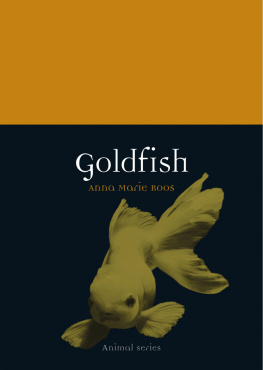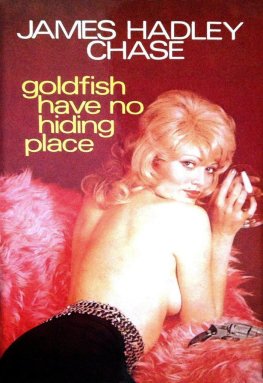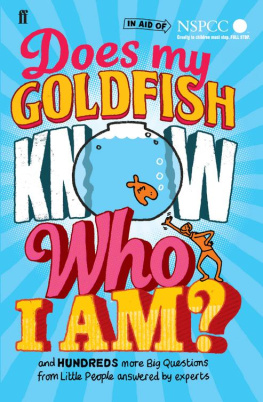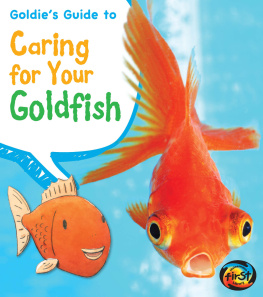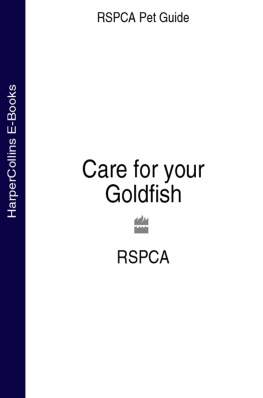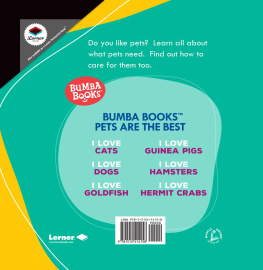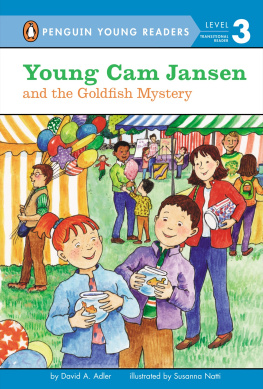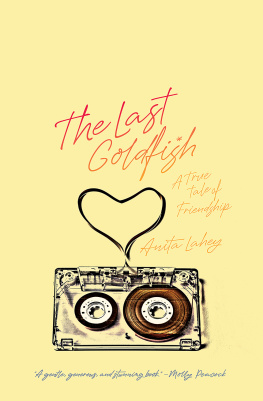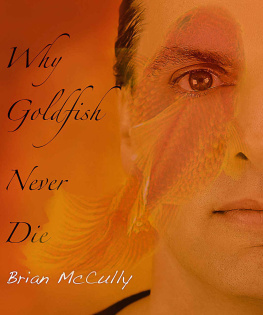Goldfish

Animal
Series editor: Jonathan Burt
Already published
Albatross Graham Barwell Ant Charlotte Sleigh Ape John Sorenson Badger Daniel Heath Justice
Bat Tessa Laird Bear Robert E. Bieder Beaver Rachel Poliquin Bedbug Klaus Reinhardt
Bee Claire Preston Beetle Adam Dodd Bison Desmond Morris Camel Robert Irwin
Cat Katharine M. Rogers Chicken Annie Potts Cockroach Marion Copeland Cow Hannah Velten
Crocodile Dan Wylie Crow Boria Sax Deer John Fletcher Dog Susan McHugh Dolphin Alan Rauch
Donkey Jill Bough Duck Victoria de Rijke Eagle Janine Rogers Eel Richard Schweid
Elephant Dan Wylie Falcon Helen Macdonald Flamingo Caitlin R. Kight Fly Steven Connor
Fox Martin Wallen Frog Charlotte Sleigh Giraffe Edgar Williams Goat Joy Hinson
Goldfish Anna Marie Roos Gorilla Ted Gott and Kathryn Weir Guinea Pig Dorothy Yamamoto
Hare Simon Carnell Hedgehog Hugh Warwick Hippopotamus Edgar Williams Horse Elaine Walker
Hyena Mikita Brottman Kangaroo John Simons King fisher Ildiko Szabo Leech Robert G. W. Kirk
and Neil Pemberton Leopard Desmond Morris Lion Deirdre Jackson Lizard Boria Sax
Llama Helen Cowie Lobster Richard J. Kin Monkey Desmond Morris Moose Kevin Jackson
Mosquito Richard Jones Moth Matthew Gandy Mouse Georgie Carroll Octopus Richard Schweid
Ostrich Edgar Williams Otter Daniel Allen Owl Desmond Morris Oyster Rebecca Stott
Parrot Paul Carter Peacock Christine E. Jackson Pelican Barbara Allen Penguin Stephen Martin
Pig Brett Mizelle Pigeon Barbara Allen Polar Bear Margery Fee Rat Jonathan Burt
Rhinoceros Kelly Enright Salmon Peter Coates Sardine Trevor Day Scorpion Louise M. Pryke
Seal Victoria Dickenson Shark Dean Crawford Sheep Philip Armstrong Skunk Alyce Miller
Snail Peter Williams Snake Drake Stutesman Sparrow Kim Todd Spider Katarzyna and Sergiusz
Michalski Swallow Angela Turner Swan Peter Young Tiger Susie Green Tortoise Peter Young
Trout James Owen Vulture Thom van Dooren Walrus John Miller and Louise Miller
Wasp Richard Jones Whale Joe Roman Wild Boar Dorothy Yamamoto Wolf Garry Marvin
Woodpecker Gerard Gorman Zebra Christopher Plumb and Samuel Shaw
Goldfish
Anna Marie Roos
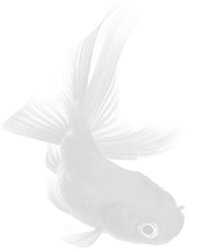
REAKTION BOOKS
To Ian, again
To K
Published by
REAKTION BOOKS LTD
Unit 32, Waterside
4448 Wharf Road
London N1 7UX, UK
www.reaktionbooks.co.uk
First published 2019
Copyright Anna Marie Roos 2019
All rights reserved
No part of this publication may be reproduced, stored in a retrieval system or transmitted, in any form or by any means, electronic, mechanical, photocopying, recording or otherwise, without the prior permission of the publishers
Page references in the Photo Acknowledgements and
Index match the printed edition of this book.
Printed and bound in China
A catalogue record for this book is available from the British Library
eISBN 9781789141702
Contents

Ryukin goldfish in an aquarium, produced from a mutation of the Japanese wakin goldfish.
No Need to Carp: The Origins and Anatomy of a Goldfish
When people are asked what animal they would like to be if reincarnated, many respond a dolphin, those altruistic, smiling, social and sleek acrobats of the deep. But for me, it would be the humble goldfish, cared for by a winsome child who would call me Cheeto, Goldie or Bubbles, and provide a reliable drift of fish flakes and a spacious aerated aquarium 25 gallons of sheer tranquillity. As a bonus, I would get to be my favourite colour of orange and live in a Barbie-pink castle, appropriate environs for the oldest ornamental fish in the world.
It would be a life prosaic yet glamorous, just like the goldfish itself, an animal that is at once ambiguous, liminal and surprising. Not for this creature does familiarity breed contempt. Rather, we should think of the goldfish as a human cultural artefact created through a millennium of religious reverence and selective breeding for practical purposes, consumerist aims and aesthetic expression. We will see in this book that goldfish are world travellers and shifting self-contradictions, at once rare and common, hero and villain, their relationships with humans often unpredictable.

Illustration of the goldfish named Cyprinus auratus by Carl Linnaeus (now known as Carassius auratus), from Marc Bloch, Ichtyologie (178597).
The origins of the goldfish are ambiguous. Even when in the mid-eighteenth century Carl Linnaeus (17071778), the founder of binomial taxonomy, gave the goldfish its modern moniker Carassius auratus, the golden carp he was not describing the wild single-tailed progenitor, but an exotic twin-tailed individual. Although Baster offered Linnaeus some of his specimens, he worried about how to transport them alive to Sweden. Linnaeus instead received most of his goldfish from a former pupil, the physician Pehr af Bjerkn (17311744), who, while staying in London, was in contact with a breeder named Richard Guy, who had a pond at his country estate with fifty to sixty goldfish. Bjerkn brought them back by ship to Gothenburg, with Linnaeus writing in September 1759:

Anna Marie Roos, Goldfish Morphology, watercolour, pencil and ink on paper.
Do please send the goldfish already tomorrow with a vessel to Uppsala; they do not freeze that easily; so I will be able to once again see them, something I have dreamed of all my days but never hoped. Let the skipper ask what price he wants, only I get them alive. God give I had them alive in my orangery.
So by the eighteenth century, goldfish were almost everywhere, even in Sweden.
Part of their biogeographical success is that they are prolific breeders, pre-programmed to spawn when the weather turns warmer, the daylight lengthens and the water temperature gradually rises to 1819C (6466F). Males and females are fairly indistinguishable outside of mating season, but with the advent of spring, the females get rounder with a swollen abdomen, and the males sport little breeding tubercles, which look like white stars, covering their gills and pectoral fins. But the female is the real star of the show, sending out pheromones from her ovaries to let the male know it is time. The term pheromone is derived from the Greek

